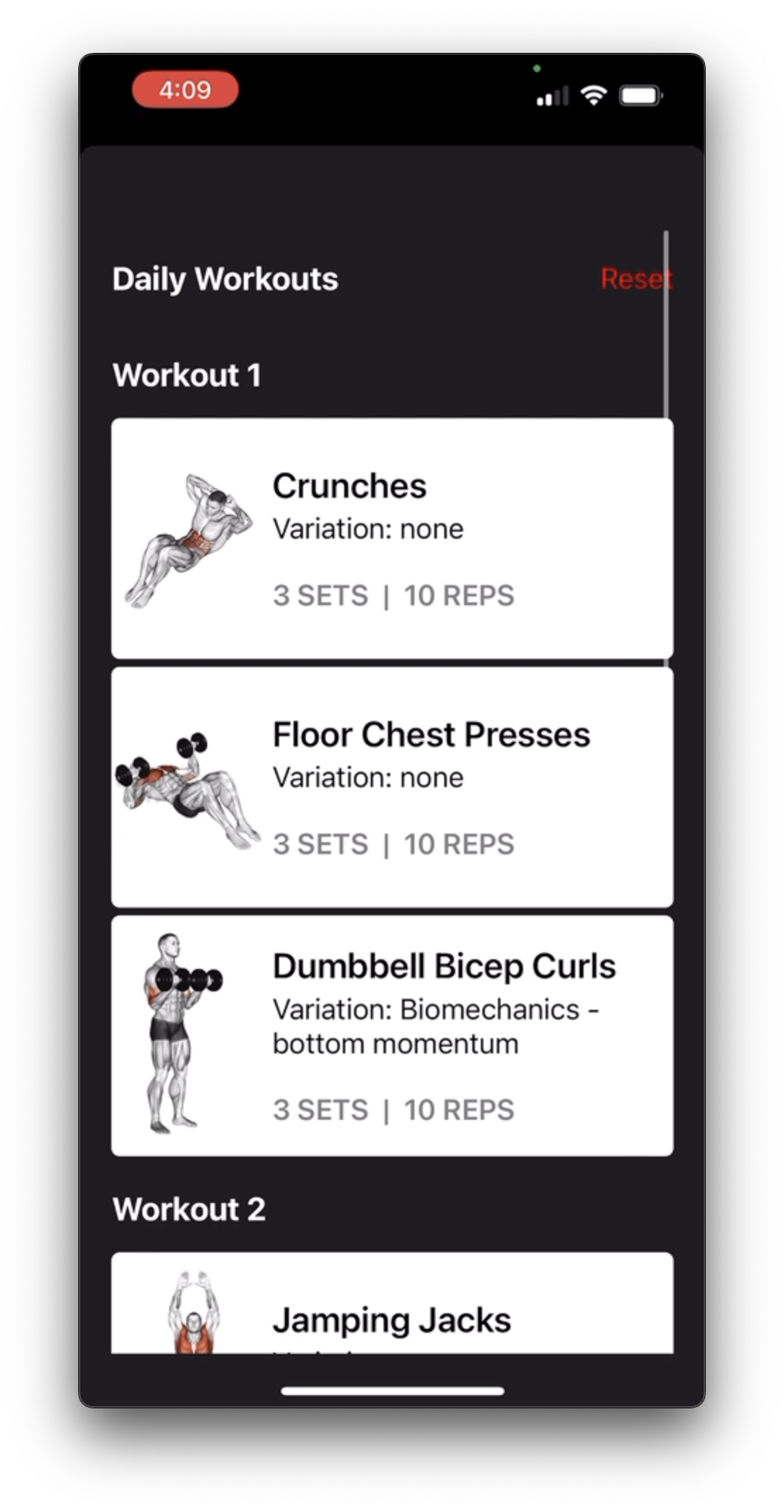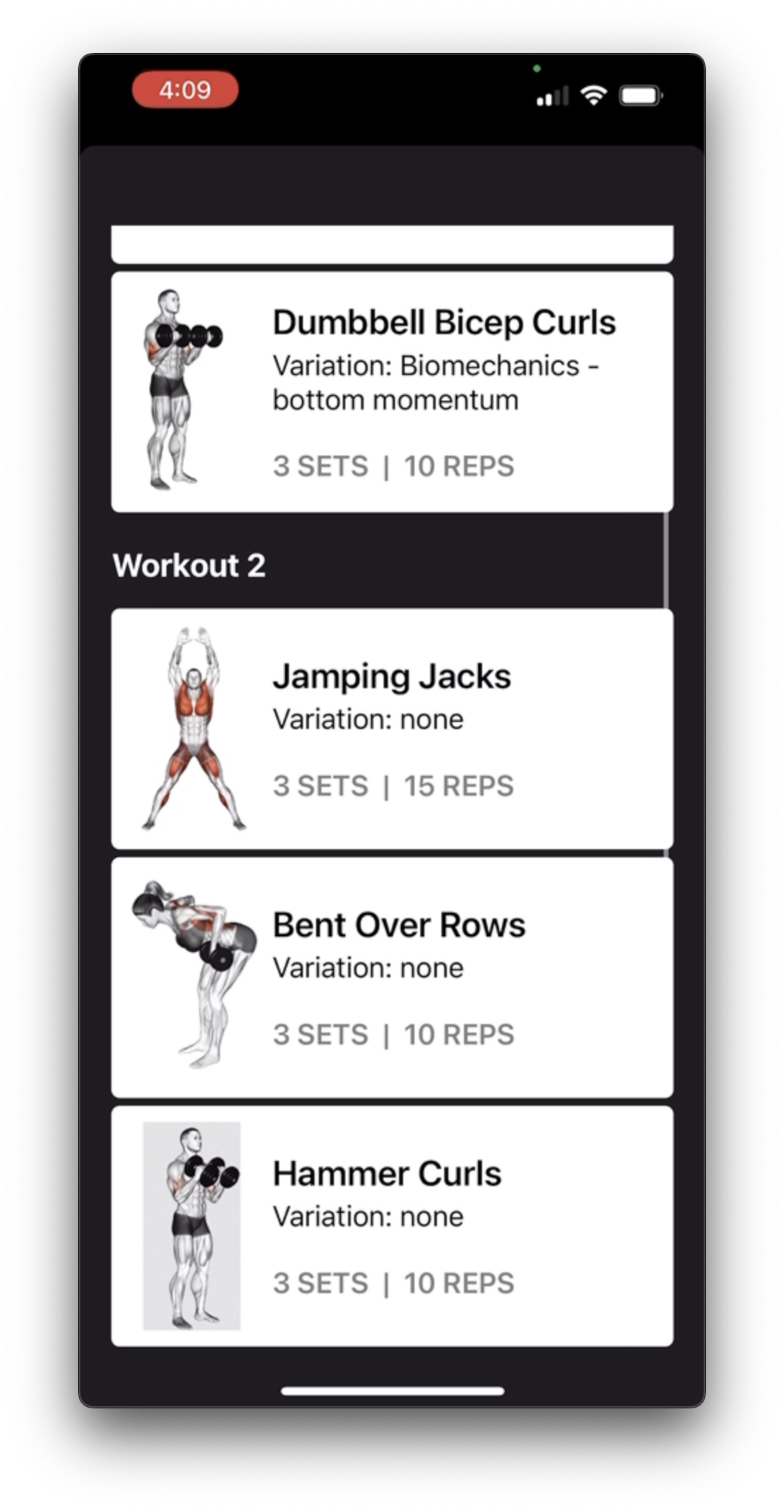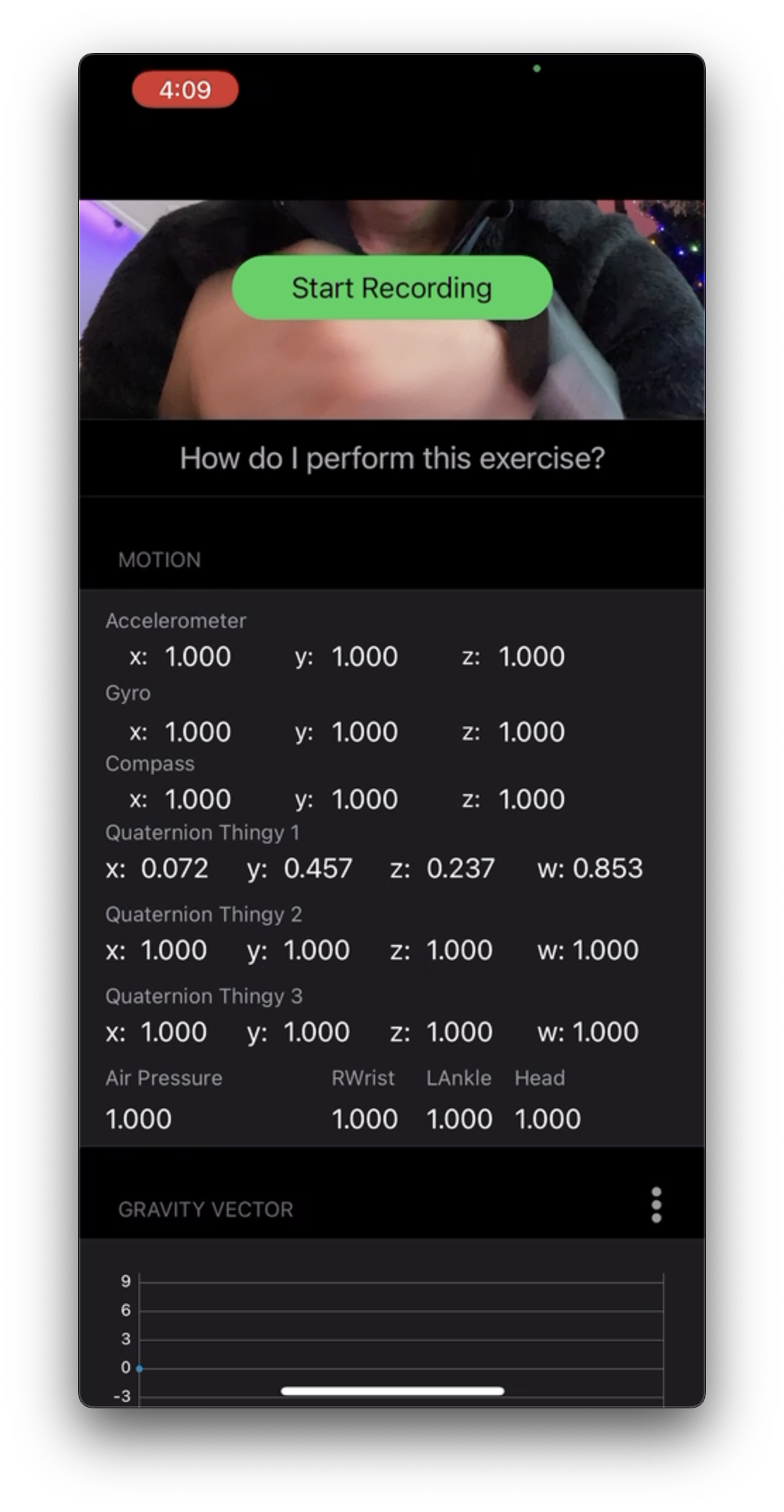Wearable Distributed Fitness Biomechanics SensinG
In this project, we developed a scalable fitness and wellness platform designed for real-time activity tracking and coaching feedback. The system features a network of wearable hardware sensors, each equipped with IMU technology, to provide insights into movement quality, including biomechanics feedback, rep counting, and exercise identification.
Initially targeted at gym and fitness enthusiasts, the platform combines biomechanical and biometric data to deliver personalized feedback for improving form and technique. Leveraging state-of-the-art ML and DSP algorithms and emphasizing biomechanics over traditional biometrics, this system aims to be the first wearable device to act as a personal trainer, offering portability and versatility across various sports and activities.
For this project, I led a cross-functional team of designers, backend engineers, and AI/ML engineers. Additionally, I personally developed the frontend for two iPhone applications in Swift. The first app was designed to collect IMU data for machine learning development and training, while the second app showcased a prototype user-facing application. This prototype demonstrated how the trained system could leverage the real time IMU data coming from the wearable sensors to identify exercises, count reps, assist with recovery time, and provide coaching to correct biomechanical dysfunctions detected while performing an exercise.
This image showcases the look and feel for the prototype of the user-facing application developed for the fitness platform, alongside an explanation of the machine learning (ML) and digital signal processing (DSP) algorithms powering its functionality.
On the left, the app interface demonstrates real-time exercise tracking and feedback. The app identifies exercises such as biceps curls and triceps extensions, counts repetitions, and provides coaching on form. After each set, users receive a summary that includes the number of reps completed, a movement quality score, and personalized feedback to improve performance.
On the right, visualizations illustrate the underlying ML models and DSP algorithms. The ML models handle exercise identification by analyzing IMU data streams, while the DSP algorithms detect activity, segment motion, count reps, and evaluate the range of motion (ROM) to provide a movement quality score. These algorithms mimic the insights of a personal trainer, offering real-time corrections and actionable feedback for improved technique.
Company: LG Electronics
Team: Emerging Technologies Department
Location: Santa Clara, CA
Year: 2020-2021
This concept video showcases the user-facing application in action, demonstrating how the system assists users during their workout. The video highlights real-time rep counting and personalized coaching feedback, guiding the user on proper form for each repetition. By leveraging biomechanical insights, the app helps users achieve optimal technique, ensuring safer and more effective workouts. This visualization brings to life the platform's potential as a personal trainer, emphasizing its ease of use and real-time interactivity.
This image features the Nordic Thingy:53, a versatile prototyping device used during the early stages of development to collect IMU data for training machine learning algorithms. Equipped with integrated sensors and wireless communication, the Nordic Thingy:53 allowed for rapid data collection and experimentation. While not intended for final deployment, it served as a temporary yet effective solution for quickly iterating on the system's biomechanics and activity tracking capabilities during initial prototyping.
This is an an example of the first version of the data collection app. This app was not user-facing and it was used as an early way to collect IMU data for different fitness exercises. The data was collected internally by the different team’s members across multiple months.




